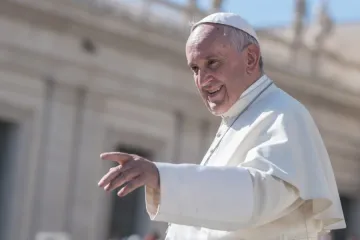Vatican City, Apr 4, 2022 / 06:10 am
In the world of the Vatican, the editio typica of a document is critically important. It is the standard edition of a text that serves as a reference for translations into other languages.
For this reason, the editio typica of Praedicate evangelium, the new apostolic constitution reforming the Roman Curia, was highly anticipated.
When the document was released without warning, and only in Italian, on March 19, it contained several minor inaccuracies and one article that needed to be corrected immediately.
The Vatican published the editio typica on March 31 in L’Osservatore Romano, Vatican City State’s daily newspaper. There are, in fact, only a few differences between the standard edition and the version released on March 19. But the changes shed some further light on the thinking behind the reform.
The most striking change concerned the celebration of the liturgy according to the pre-conciliar missal, also known as the usus antiquior, or “ancient usage.” Benedict XVI had defined this as an “extraordinary form” of the Roman Rite, effectively liberalizing its celebration. His decision was set out in the 2007 motu proprio Summorum Pontificum, which remained in force until June 2021.
That was when Pope Francis published a new motu proprio, Traditionis custodes, effectively abolishing Summorum Pontificum. The pope made it clear that those who wish to celebrate Mass according to the missal preceding the Second Vatican Council will have to do so by asking for authorization from the Vatican, in a way akin to biritualism.
Article 93 of Praedicate evangelium — in a section dedicated to the newly named Dicastery for Divine Worship and the Discipline of the Sacraments — initially said that “the dicastery deals with the regulation and discipline of the sacred liturgy as regards the extraordinary form of the Roman Rite.”
The editio typica now speaks of the “use — granted according to established norms — of the liturgical books preceding the reform of the Second Vatican Council.”
This change acknowledges not only the norms of Traditionis custodes, but also the exceptions established by Pope Francis, especially the one granted to the Priestly Fraternity of St. Peter (FSSP).
The pope established in February, with a handwritten decree, that FSSP members can continue to use liturgical books published before 1962. The decree was never published in an official Vatican bulletin, but only on the FSSP’s website.
At a press conference presenting Praedicate evangelium on March 22, days after its unexpected release, Bishop Marco Mellino, secretary of the Pope Francis’ Council of Cardinals, acknowledged the mistake in the initial text of the constitution. He explained that Article 93 had not been updated in light of Traditionis custodes or the pope’s decision regarding the FSSP.
The revised article seems to have been worded so as to satisfy all these considerations.
There are other changes in the editio typica that suggest the constitution’s authors lacked expert knowledge of the Eastern Catholic Churches.
In chapter II, on the “Principles and Criteria of Service to the Roman Curia,” we now read in paragraph two that “This reform proposes, in the spirit of a ‘healthy decentralization,’ to leave to the competence of the Pastors the faculty to resolve in the exercise of their ‘own task as teachers’ and pastors the questions they know well and which do not affect the unity of doctrine, discipline, and communion of the Church, always acting with that co-responsibility which is the fruit and expression of that specific mysterium communionis which is the Church.”
The previous version spoke of diocesan or eparchial Pastors, going on to give a further specification that is undoubtedly unnecessary because the Pastor is such in both the Latin and Eastern Churches.
Again, in Article 57 of the editio typica, in the section dedicated to the Dicastery for Evangelization, we read that the dicastery “assists and supports the initiatives of diocesan/eparchial bishops, episcopal conferences and Eastern hierarchical structures to announce the Gospel.”
(Story continues below)
In the earlier version, there was talk of support for bishops or eparchs. But “eparch” is only a title. It is not an alternative to that of bishop and it concerns how an ecclesiastical territory is defined. Hence the change in the text.
The editio typica also emphasizes that “it is up to the Doctrinal Section [of the Dicastery for the Doctrine of the Faith], through the Matrimonial Office, to examine, both in law and in fact, all that pertains to the ‘privilegium fidei.’”
The so-called Pauline privilege permits the dissolution of a marriage between two unbaptized persons. But in the first version of Article 74, there was no mention of the Matrimonial Office.
The Matrimonial Office has become part of the Doctrinal Section of the Dicastery for the Doctrine of the Faith, whose structure was recently reformed by Pope Francis. The older version of the constitution, it seems, overlooked the Matrimonial Office, which might suggest there was at one point some uncertainty about its future.
Finally, the editio typica’s Article 124, in the section dedicated to the Dicastery for Consecrated Life and Societies of Apostolic Life, has other minor changes. The constitution says that “the Dicastery deals with the issues of competence of the Apostolic See regarding the life and activity of the Institutes of Consecrated Life and Societies of Apostolic Life." A series of examples are then given.
The old edition emphasized that the dicastery also dealt with the “confirmation of the members’ dismissal decree and the examination of the related appeals.” The new version only explains that the dicastery deals with “the examination of appeals against the decree of dismissal of members.” In practice, the dicastery takes a more central role.
A final curiosity is that in the first version, the Roman Curia was written as “Curia romana” without the second capital letter. In the editio typica, the capital letters have been restored, as no doubt befits an institution that has always held such importance in the Vatican.






